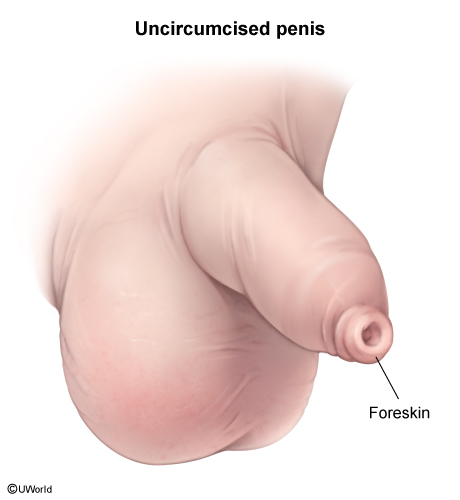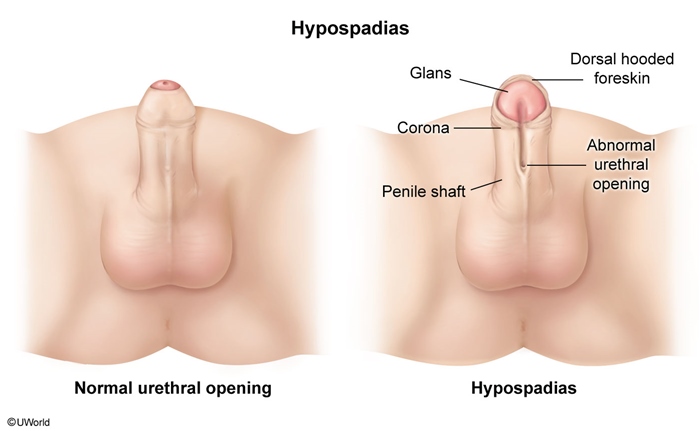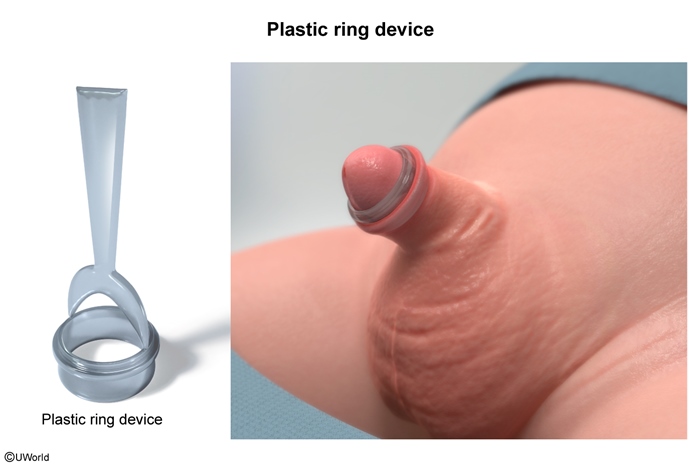Male Circumcision
Article Sections
Introduction
Male circumcision is the surgical removal of the penile foreskin and is most commonly performed in the first month of life for religious, cultural, or medical reasons. Parents often seek clarification about the medical implications of the procedure, including its risks and benefits.
Anatomy and natural history
The prepuce, or foreskin (Figure 1), is a retractable fold of skin that covers the glans penis and typically extends over at least a third of the penis length. Its outer keratinized layer folds over and is continuous with an inner mucosal epithelium; these layers are separated by a central layer of dartos fascia.
Physiologic phimosis (Figure 2), a normal condition in early childhood, prevents foreskin retraction due to natural adhesions between the inner foreskin and the glans. The foreskin gradually retracts over time as epithelial cells shed (forming smegma), and intermittent erections cause the breakdown of adhesions. Most males have spontaneously retractable foreskin by the onset of puberty.
Continue Learning with UWorld
Get the full Male Circumcision article plus rich visuals, real-world cases, and in-depth insights from medical experts, all available through the UWorld Medical Library.
Figures





